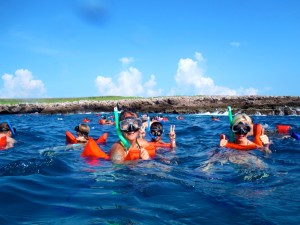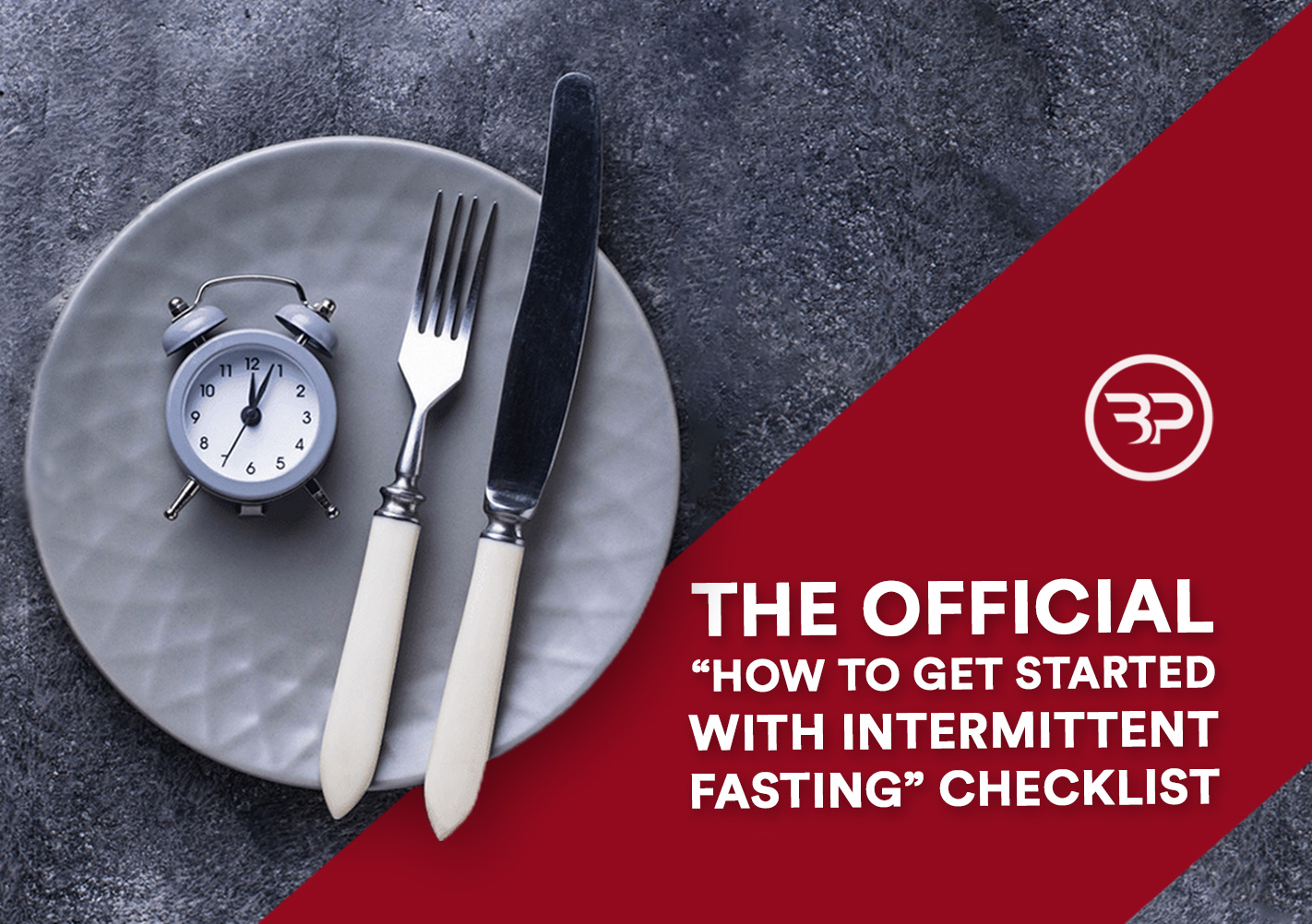Exercise while Traveling:What You Must Know
August 4, 2014
Oh shit.
After a two-hour boat ride into the Pacific Ocean it hit—diarrhea.
There was instant sweat and gurgling in my gut. Problem is, I swam with a strong current to a Hidden Beach off the Mexican Coast. I was on my honeymoon seeing the Marietas Islands, “the one place” I needed to see in Puerto Vallarta.
Oh well. I Michael Phelps’ed my ass back to the boat before I could drop a surprise for un-suspecting snorkelers. I made it and sprinted to the nearest bathroom.
The woman’s bathroom.
I didn’t care—my heart rate redlined, my ass clenched, and I made it.
For two weeks I didn’t touch a barbell, didn’t lift a weight over 50lbs and didn’t track a workout. Normally, I track every workout detail ad-naseum, but I went on vacation with no plan. As it ended up, swimming so I didn’t dump my pants was the hardest exercise over two weeks of vacation.
I’m dedicated in the gym- exercise is in the fabric of my being, but we all need a break from the mental and physical challenges of work and training. Vacation should be vacation for your mind and body. That doesn’t mean vacation is a free for all license to gluttony, it should be balanced. Here are the strategies Lauren and I use to minimize the damage while enjoying our vacation.
Top 5 Fit Travel Tips
- Make Health(ier) food choices at the resort.
- Emphasize leans cuts of meat, fish, fresh vegetables, and minimally processed meals.
- Hit some unstructured gym sessions (more on this later) to loosen up and jump-start the day. Travel workouts are never more than 25 minutes.
- Walk everywhere and engage in some recreational activities that don’t involve the pool bar. Go kayaking, swimming, hiking, paddle boarding, or jet skiing.
- Bring Healthy choices to airports like nuts, healthy protein bars, dried fruit and the like.
That’s it. Most of the trip we explored beaches, devoured strange food, and relaxed poolside. I didn’t “sneak” 80-pound kettlebells past airport security, bring a heap of supplements, or bitch when I couldn’t deadlift hyoge weights brahh.
Vacation is the time to remove yourself form the 9-5, your obnoxious cell phone, and experience your life. Leaving the work mindset is essential for mental and physical health. Moreover, if you engage is physically demanding jobs or training you’ll reap huge rewards by taking a break from the gym to emphasize recovery.
The Importance of Exercise Recovery
You neglect recovery in your fitness routine. You’re not alone, it’s nearly universal. To improve your “fitness” or performance capabilities the process of general adaptations must take place. The cliff notes version is thinking of exercise like scraping your knee. You scrape your knee, the inflammatory process takes place, and you get a scrape. If you have a scrape and you pick it (gross) does it heal? Or continue to bleed, scab over again, scar, and take forever to heal? To recover you must allow your body to heal.
According to Practical Programming for Strength Training by Mark Rippetoe and Lon Kilgore, here are the stages of GAS and their relation to training:
Stage 1: Alarm or shock. Alarm or shock is the immediate response to stress and can include feeling flat, soreness, and stiffness. A slight reduction in performance occurs at this phase. The more advanced the athlete, the greater the stress needed to induce the shock phase.
Stage 2: Adaptation or resistance. Adaptation occurs as the body responds to the training and attempts to equip itself with the tools to survive exposures to stress. In training this can include hormonal adaptations, nervous system adaptations, and tissue building. Adaptation is unique to each individual and varies due to training age and work tolerance in proximity to the genetic ceiling. A gym newbie may recover from this within 24 hours – while an advanced trainee may need months to disrupt homeostasis and adapt to higher training levels.
Stage 3: Exhaustion. This occurs when the stimulus is too great for the body to adapt. This is most applicable to moderate-to-advanced athletes, and signals that excessive high magnitude, frequency, and duration exercise should be avoided.
You’ll survive if you miss a dynamic effort bench day and five other workouts. Neither workout, nor week of workouts makes or breaks your physique. In the greater spectrum of a lifting career one week off from training is a tiny amount of time. Relax and recover, your body needs it. Period time away restores hormone levels to baseline, and leaves you like a hungry pride of lions in the Serengeti. Once you return to the gym you’ll be firing on all cylinders to maximize workouts.
Simple Travel Workouts
While I don’t seek out top-notch gyms when I travel I do look for serviceable facilities. Most hotels and resorts are increasingly health conscious and provide cardio equipment, open space, plus a few janky dumbbells to accommodate exercise while traveling.
Here’s what my hotel offered: dumbbells, pink foo-foo 3lbs-50lb hex dumbbells, pull-up/dip station, a “cybex” circuit of machines, and cardio equipment. Nothing-special right?
Here are my workouts (to the best of my memory) from two weeks of travel. These were set-up in circuit fashion for 3-5 sets of 8-12 reps per exercise.
Workout 1
- Dips
- Goblet squats
- L-Sits
- Spiderman push-ups
- Step back lunges w/overhead press
Workout 2
- push-ups
- single leg hip thrust
- pull-ups (varying grips)
- front planks
- bodyweight lateral squats
Workout 3
- L-pull-ups
- side planks
- db clean and press
- dumbbell split row
- biceps curl
Exercise while traveling is best kept simple. There’s no need to complicate workouts, especially on vacation. Your body is the machinery behind the workout whereas equipment is only a tool. Master the machine and the tool becomes more effective.
To maximize workouts while traveling emphasize basic movement patterns like pushes, pulls, lunges, squats, planks, and sprints. These movements performed without equipment and easily intensified with minor tweaking.
How to Make Any Exercise Harder:
- Make Exercises unilateral: Greater balance, proprioception, stability, and strength requirements Try this: Switch from a bodyweight squat to a pistol squat or an overhead press to a single arm press.
- Change Exercise Loading: Dumbbells only up too 50? Don’t sweat it muscles. Move resistance away from your center of gravity. Try this: Top- Dumbbell Lunges. Instead of holding dumbbells at your side for lunges “rack” them on top of your shoulders to challenge your body.
- Use Time under tension methods: Instead of counting reps work against the clock. Timed sets are a powerful method to focus on the execution of each rep rather than aiming to finish the set. Besides, keeping muscles working for 30-45 seconds elicits tons of tension and metabolic stress on the muscles—perfect for muscle growth. Try This: Stuck with only a dumbbell for squats? Hold a dumbbell in the goblet position and perform reps for time rather than a set number of reps.
- Metabolic circuits: Metabolic circuits are my favorite intensity booster while traveling. They get me out of my typical strength/power zone and blast me with short rest-periods on simple exercises. These are great when you’re short on time and looking to maximize your workout. Try This: Pick a push, pull, lower body exercise, and core exercise.Let’s say push-up, pull-up, goblet squat, and plank. Perform 4 sets of 10 for each exercise and 30-60 seconds for your plank. Keep rest minimal between exercises. P.S. These are a shitty choice with technical lifts like cleans.
- Combo exercises: Combine exercises to increase efficiency and increase difficulty. Obviously a box jump and push press wouldn’t be good, so use your head. Try This: Instead of a lunge and overhead press performed independently combine them into a step back lunge with a press. You’ll be floored by the coordination these exercises require.
- Narrow base of support: A narrow base of support requires greater balance and control for a wide range of exercises. Unilateral exercises are the first that come to mind, but even modifying typical bilateral exercises presents a challenge. Try this: Instead of keeping your feet apart during push-ups and planks bring your feet closer until they’re touching. This decrease base of support creates an extra challenge.
- Increase body angle: Increasing your body angle will increase the load supported by your body. Try this: Instead of 10 easy push-ups on the ground elevate your feet on a bench or nearby chair. Too tough? No problem, flip your hands and elevate them on the chair for a regressed push-up.
Exercise While Traveling
It’s Okay to take it easy.
There’s no need to devise and a complex plan for exercise while traveling. Master basic movement skills, increase the difficulty as required, and enjoy yourself. You’re on vacation for a reason—drink a beer, enjoy the sunset, and relax. You’ll be back and better than ever in no time.
Rippetoe, Mark, and Lon Kilgore. Practical Programming for Strength Training. Wichita Falls TX : The Aasgaard Company; 2nd edition , 2009.









